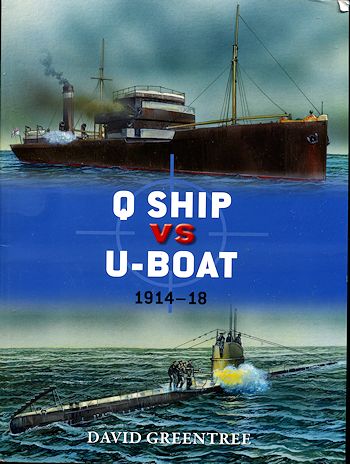 This latest
addition to Osprey's Duel series has two antagonists that are really very
different in comparison to the other books in this series. Yet they were
antagonists and faced each other in combat.
This latest
addition to Osprey's Duel series has two antagonists that are really very
different in comparison to the other books in this series. Yet they were
antagonists and faced each other in combat. |
Author: |
David Greentreee |
|
Publisher/Distributor |
Osprey Publishing |
|
Price |
$18.95 MSRP |
|
Reviewer: |
|
| Notes: |
80 pages, 7¼ x 9¼ inches, softcover ISBN: 978-1-78200-284-0 |
 This latest
addition to Osprey's Duel series has two antagonists that are really very
different in comparison to the other books in this series. Yet they were
antagonists and faced each other in combat.
This latest
addition to Osprey's Duel series has two antagonists that are really very
different in comparison to the other books in this series. Yet they were
antagonists and faced each other in combat.
Most of you are aware that it was the Germans during WWI who used the submarine to the greatest effect and built up quite a reputation as well. Sure, the British had submarines, but as Germany wasn't reliant on sea lanes for supplies and food, there was little in terms of what became known as commerce raiding on the British side of things.
In fact, submarine warfare started out rather tamely as wartime goes. Basically, U-boat captains would stop a ship, verify that it was carrying war materials, allow the crew to abandon ship in life boats and then sink the ship with the deck gun. These early U-boats did not carry a lot of torpedoes and so generally saved those for British or French war ships. Despite having very few boats at sea at any one time, the Germans were rather successful in these operations. The Admiralty knew that something had to be done.
The initial anti-u-boat operation would be to have a fishing trawler on a 'leash' (an underwater phone line) to a waiting British submarine. When the U-boat came to the surface to sink the ship with its gun, the British submarine would try to sink the U-boat. Needless to say, this was successful the first few times, then the Germans got wary and started using torpedoes on these ships.
With that option gone, the British decided to arm regular 'tramp steamers' with guns and crews. These ships would ply the shipping lanes and when a U-boat came to the surface to shell the ship, the covers or drop down doors or whatever was hiding the deck guns and crews would be removed and the gun crews wouls open fire on the submarine. This required a lot of courage on the gun crews as often they would be shelled first. They also had to be very accurate as they would only have the opportunity to get off a few shots at best before the submarine submerged.
Once the Germans heard about these ships, they started getting more and more wary. Use of torpedoes increased so the 'Q-ships' had to up the ante, so to speak. They started operating under neutral flags, raising the British ensign only moments before the covers came off the guns and the crews started firigin. Just like German surface raiders, fake housings were used to try to disguise these ships to look like other types. Even sailing ships were outfitted as Q-ships.
By the time the convoy system came on the scene in 1917, the need for Q-ships gradually diminished until there were no encounters with U-boats. So how successful were these ships? During the war, 12 U-boats were sunk by Q-ships and this includes two sunk by the sub/trawler combo. In return 25 Q-ships were sunk by submarines.
This edition by David Greentree covers the development and deployment of q-ships as well as how the tactics changed as the war progressed. It also covers the German side of things and how they reacted to this threat. There are a lot of great period photos and some fine art work and drawings to get an idea of how these ships were designed and used. There are also several superb examples of Q-ship operations and successes. It makes for a most interesting read, a book that no WWI naval fan should be without.
April 2014
For more on the complete line of Osprey books, visit www.ospreypublishing.com. In the US, it is Osprey Direct at 443 Park Avenue South, New York, NY 10016, where you can get a catalogue of available books.
If you would like your product reviewed fairly and quickly, please contact me or see other details in the Note to Contributors.